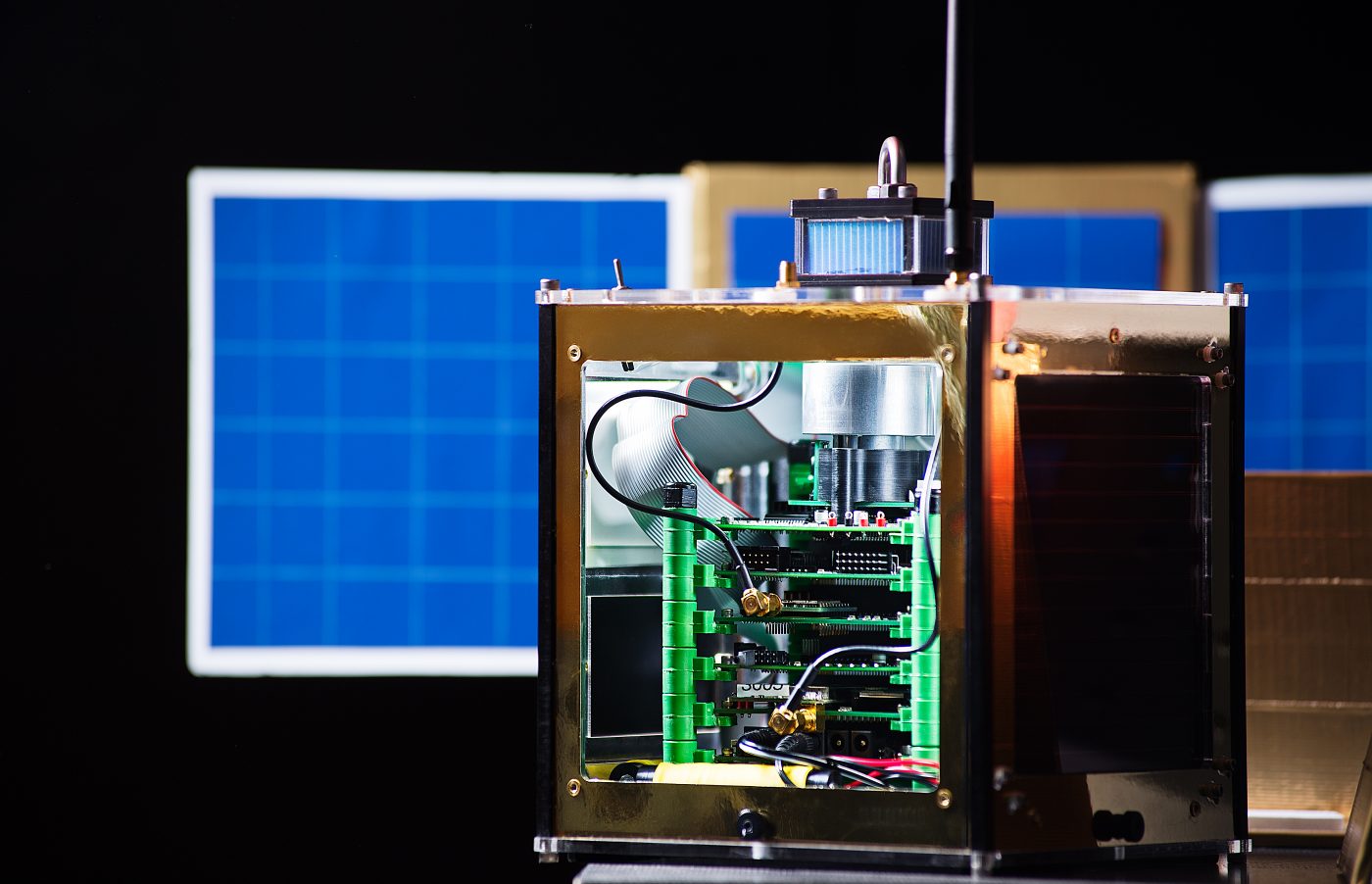The Spacecraft Robotics and Control Laboratory is where theoretical meets applied space research. Specifically, research activities focus on the development of autonomous guidance, navigation and control (GN&C) technologies that enable challenging spacecraft operations, such as rendezvous and docking, formation flying, on-orbit servicing and robotic capture of space debris and damaged satellites. The centerpiece of this laboratory is a 20,000 pound, 8 feet by 12 feet gravity-offset air bearing table, which emulates the dynamics of space by making use of compressed air to float spacecraft platforms on a flat, smooth, frictionless, large surface area (similar to an inverted air hockey table).
This unique facility allows researchers to develop and experimentally validate their innovative spacecraft GN&C technologies in a realistic environment. While tables of similar sizes currently exist at NASA and the German Aerospace Centre, Carleton’s 10-ton table is thought to be the largest gravity-offset table in Canadian universities.
Autonomous spacecraft that can “see” and “do” things on their own are on the cutting edge of intelligent spacecraft and robotics research. Designed to pick up the junk currently littering space, they are beset with tasks such as changing batteries and completing repairs, which will prevent more space junk from piling up when technology wears out or needs to be fixed. Is it envisioned that these intelligent spacecraft might also be used to autonomously inspect the exterior of the International Space Station.
Hovering at 5 microns (half the thickness of a human hair) above the surface of the gravity offset table, these experimental spacecraft are at the forefront of space technologies.
